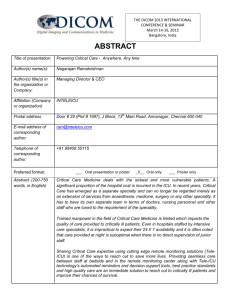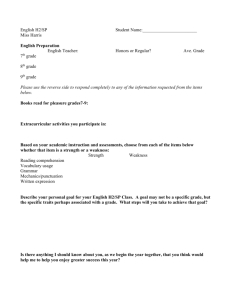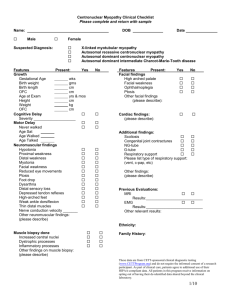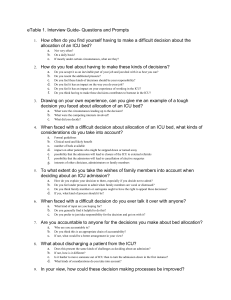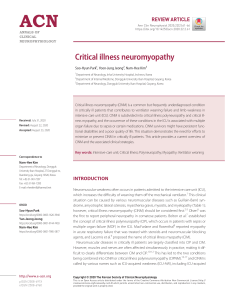Mobilizing Patients in the Intensive Care Unit
advertisement
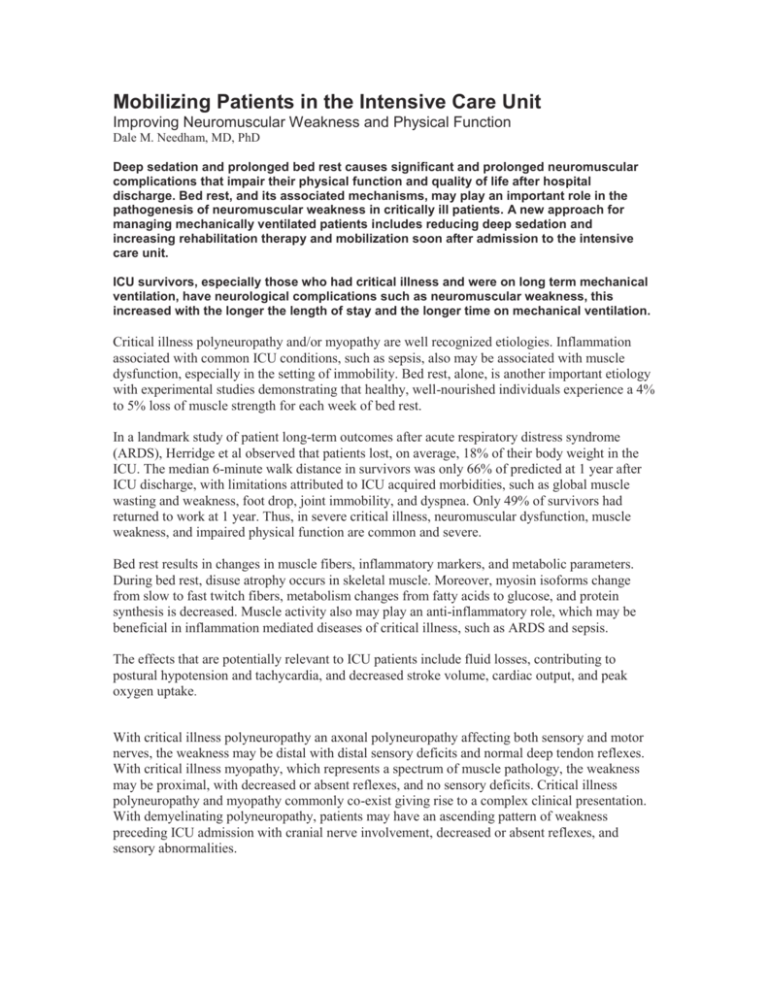
Mobilizing Patients in the Intensive Care Unit Improving Neuromuscular Weakness and Physical Function Dale M. Needham, MD, PhD Deep sedation and prolonged bed rest causes significant and prolonged neuromuscular complications that impair their physical function and quality of life after hospital discharge. Bed rest, and its associated mechanisms, may play an important role in the pathogenesis of neuromuscular weakness in critically ill patients. A new approach for managing mechanically ventilated patients includes reducing deep sedation and increasing rehabilitation therapy and mobilization soon after admission to the intensive care unit. ICU survivors, especially those who had critical illness and were on long term mechanical ventilation, have neurological complications such as neuromuscular weakness, this increased with the longer the length of stay and the longer time on mechanical ventilation. Critical illness polyneuropathy and/or myopathy are well recognized etiologies. Inflammation associated with common ICU conditions, such as sepsis, also may be associated with muscle dysfunction, especially in the setting of immobility. Bed rest, alone, is another important etiology with experimental studies demonstrating that healthy, well-nourished individuals experience a 4% to 5% loss of muscle strength for each week of bed rest. In a landmark study of patient long-term outcomes after acute respiratory distress syndrome (ARDS), Herridge et al observed that patients lost, on average, 18% of their body weight in the ICU. The median 6-minute walk distance in survivors was only 66% of predicted at 1 year after ICU discharge, with limitations attributed to ICU acquired morbidities, such as global muscle wasting and weakness, foot drop, joint immobility, and dyspnea. Only 49% of survivors had returned to work at 1 year. Thus, in severe critical illness, neuromuscular dysfunction, muscle weakness, and impaired physical function are common and severe. Bed rest results in changes in muscle fibers, inflammatory markers, and metabolic parameters. During bed rest, disuse atrophy occurs in skeletal muscle. Moreover, myosin isoforms change from slow to fast twitch fibers, metabolism changes from fatty acids to glucose, and protein synthesis is decreased. Muscle activity also may play an anti-inflammatory role, which may be beneficial in inflammation mediated diseases of critical illness, such as ARDS and sepsis. The effects that are potentially relevant to ICU patients include fluid losses, contributing to postural hypotension and tachycardia, and decreased stroke volume, cardiac output, and peak oxygen uptake. With critical illness polyneuropathy an axonal polyneuropathy affecting both sensory and motor nerves, the weakness may be distal with distal sensory deficits and normal deep tendon reflexes. With critical illness myopathy, which represents a spectrum of muscle pathology, the weakness may be proximal, with decreased or absent reflexes, and no sensory deficits. Critical illness polyneuropathy and myopathy commonly co-exist giving rise to a complex clinical presentation. With demyelinating polyneuropathy, patients may have an ascending pattern of weakness preceding ICU admission with cranial nerve involvement, decreased or absent reflexes, and sensory abnormalities. Patient sedation is difficult. Adequate sedation involves balancing the need for patient comfort, cardiopulmonary stability, ventilator synchrony, and safety (eg, prevention of accidental removal of medical devices), which may most easily be ensured with deep sedation compared with a greater degree of patient wakefulness with lighter sedation. Lighter sedation is associated with an improved ability to perform neurological evaluation (and fewer associated diagnostic tests), substantially decreased duration of mechanical ventilation and ICU stay, and potentially reduced posttraumatic stress disorder symptoms in the months following hospital discharge.
